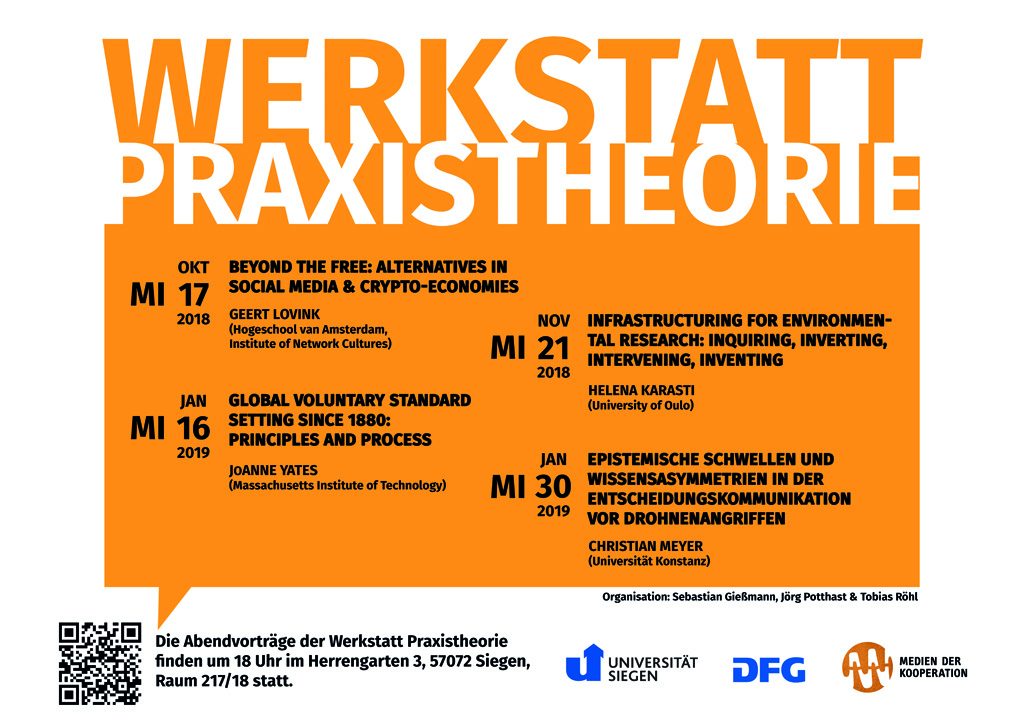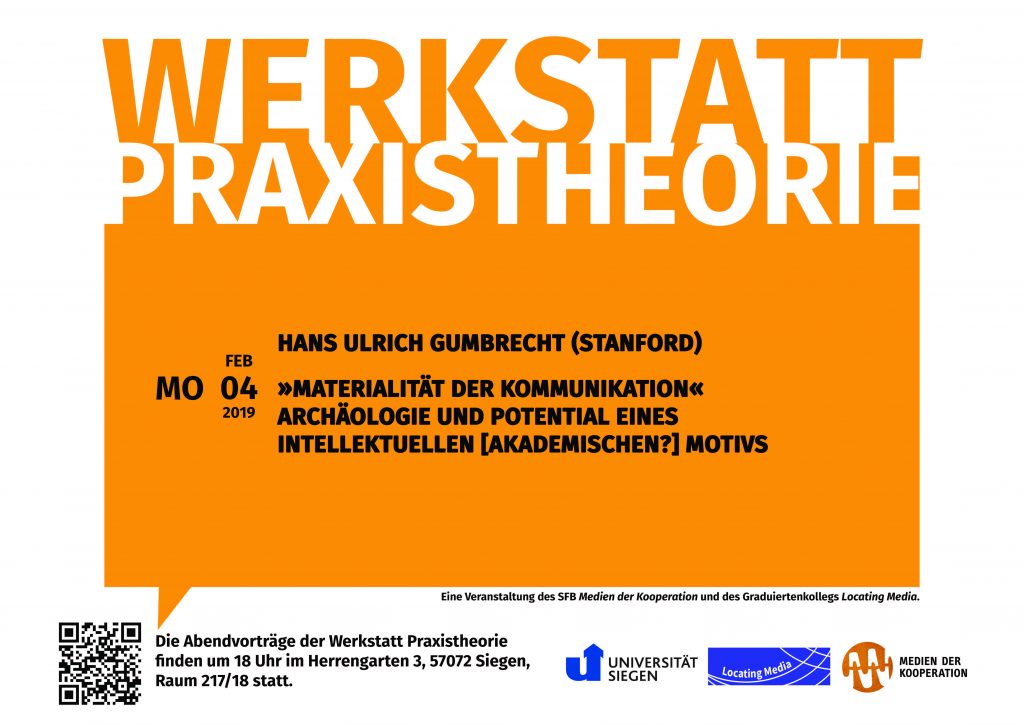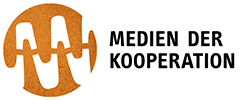Werkstatt Praxistheorie Winter 2018/19
Die Werkstatt Praxistheorie widmet sich in diesem Semester den Medienpraktiken des Registrierens und Identifizierens.
Das übergreifende Ziel der Werkstatt Praxistheorie A ist eine Neuperspektivierung der Mediengeschichte und Medienanalyse, die Praxis allen anderen Größen vorlagert und deshalb vor allem Produktions- und Arbeitsprozesse in den Vordergrund rückt. Für die historiographische und ethnographische Arbeit sollen die ‚Medien der Kooperation‘ in drei praxis- und medientheoretischen Kategorien heuristisch erfasst werden: Medienpraktiken der Koordination, Medienpraktiken der Delegation und Medienpraktiken der Registrierung und Identifizierung. Anhand dieser Kategorien werden Medienpraktiken in Öffentlichkeiten und Infrastrukturen untersucht.
Praxistheorie B wird sich der ‚Theoretischen Empirie‘ widmen und Forschungen versammeln, die es verstehen, Fragen der Theorieentwicklung und eigenständige empirische Forschung präzise aufeinander abzustimmen. Zu diesem Zweck lassen sich drei ‚Mittelpunkte‘ benennen, welche sich seit dem ‚Practice turn‘ herauskristallisiert haben:
(1) Medienpraktiken des Entstörens und Reparierens(2) Medienpraktiken des Experimentierens und (3) Medienpraktiken des Aktualisierens.


Vorträge im Wintersemester 2018/19:
Mittwochs um 18:00
Herrengarten 3, Raum AH- 217/18
In this presentation I will give an overview of the recent work of the Institute of Network Cultures. How do we relate a radical critique of social media (our Unlike Us initiative) with efforts to design alternative internet revenue models (which we deal with in the MoneyLab network)? How can we get rid of the social contract of the ‘free’ and the related extraction model that Silicon Valley has imposed on us? How can artists and creative workers make a living in the 21st century now that copyright is dead and the decentralized value exchanges via blockchains are not yet in place? How can crowdfunding experiments, debates about ‘cashless society’ and universal basic income be linked? Can ‘federated’ networks become a viable alternative to the current centralized platform logic?
This lecture is based on my longitudinal research engagement with the Long Term Ecological Research (LTER) networks. I will reflect back on how I have constructed the ethnographic field and object of inquiry since 2002 and across multiple organizational, institutional and geographic boundaries. With my combined interest in ethnographic inquiry into participants everyday practices and participatory design approach for intervening, I recount how data and infrastructure came to matter in various ways, for example as information management, growing one’s own infrastructure and research infrastructure formation. From this background, I speak to ‘tight integrations’ of ethnography and participatory/collaboratory design and to extending the traditionally short-term and small-scale scopes of Participatory Design and Computer Supported Collaborative Work by ethnographically pursuing the sociotechnical phenomenon in question. Building on the work by Susan Leigh Star, Geoffrey C. Bowker and colleagues, I propose to study infrastructuring as it emerges through the dimensions of relational, invisible, connected, emerging and accreting practices, and through intervention and intentionality. I will end with some observations and experiences from our most recent investigation on the formation of pan-European research infrastructures for environmental research.
Private, voluntary standards shape almost everything we use, and have been critical to every major change in the world economy for more than a century, including the rise of global manufacturing and the ubiquity of the Internet. A social movement of engineers created this increasingly complex, worldwide system through three waves of institutional innovation beginning in the 1880s. The engineers initially aimed to prove their status as professionals by doing something that governments rarely wanted to do and markets typically failed to do — create useful standards. They created principles of balanced participation by multiple stakeholders and developed a process to reach consensus on standards that would be widely adopted by manufacturers and would satisfy the manufacturer’s corporate customers. By the 1920s, the standardizers thought of themselves as critical to national prosperity and world peace. After World War II, a second, increasingly international wave of the standardization movement transcended wartime enmities and Cold War divisions to create standards that made the global economy possible. Since 1990, a new generation of standardizers has launched a third wave, focusing on standardizing the Internet and Web and applying the same standard setting process to private regulation of the environmental and social downsides of globalization.
Wenn Bodentruppen bei Gefahr Drohnen zur Luftunterstützung anfordern, stehen deren Piloten vor der Herausforderung, die Völkerrechtskonformität des eigenen Angriffs sicherzustellen. Dazu müssen sowohl feindliche Kämpfer („military aged males“) als auch Waffen und feindliche Aktivitäten identifiziert werden. An der hierzu erfolgenden epistemischen Kommunikation sind mehrere Stellen beteiligt, die über den ganzen Globus verteilt sind, verschiedene Wissensstände aufweisen und unterschiedlichen Zugang zu Medien besitzen, die Informationen – etwa durch Kameraaufnahmen aus der Luft – verfügbar machen. Im Vortrag werde ich demonstrieren, wie die erforderlichen Wissensobjekte auf der Basis der medialen Information in verteilter Kognition identifiziert und ratifiziert werden und welche Rolle die sequenzielle Interaktionsdynamik bei der Entscheidung für oder gegen einen Luftschlag spielt.
Kontakt:
Dr. Sebastian Gießmann
sebastian.giessmann[æt]uni-siegen.de


